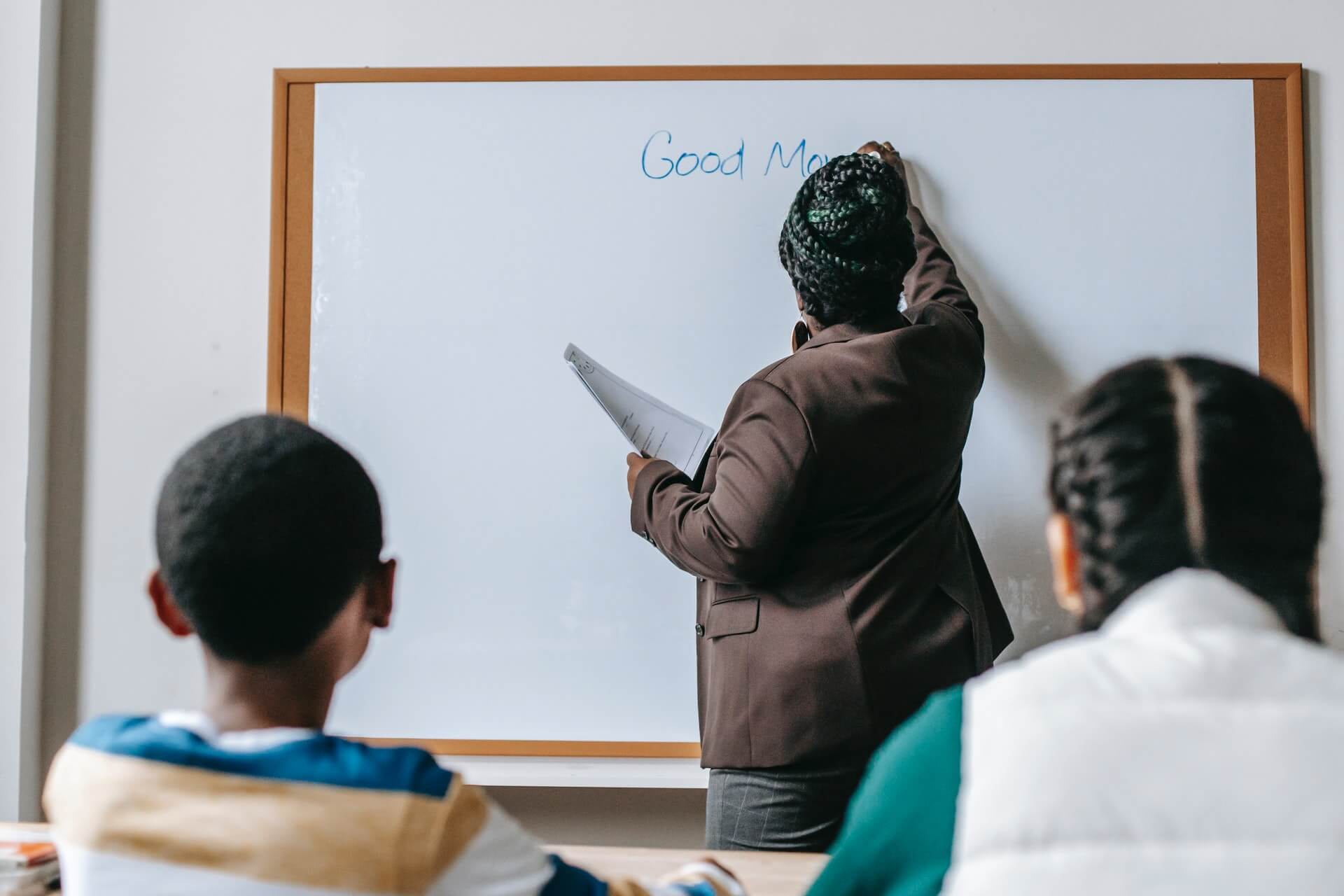Growth Mindset in the Classroom: A Teacher’s Guide
If you look at what happens inside classrooms at Iowa BIG, an XQ school in…

If you look at what happens inside classrooms at Iowa BIG, an XQ school in Cedar Rapids, you’ll see students discussing everything that went wrong that day. They aren’t complaining though, they are interrogating. They are looking at the failures as places where they can try to get it right again. You see, failure at Iowa BIG is part of the learning process.
Students learn that failure is a necessary part of learning. The school further flips this negative narrative of failure by rethinking traditional systems of mastery, getting rid of points, grades, and GPAs. Instead of passing or failing an assignment, projects are assessed based on the skills gained and lessons learned.
Creating environments where meaningful and engaged learning happens on a regular basis helps students learn that failure is part of the learning process. Or as one of our students put it, “Not every time you fail it has to stay that way. You can come back up.”
Today, we call this approach to failure a “Growth Mindset.” And for students, it often can mean the difference between “I can’t” and “I can” and success at school and in life.
Fostering a growth mindset is more important than ever. Learners for tomorrow need to be resilient, critical thinkers who are ready to tackle the problems of tomorrow. In fact, this kind of mindset is deeply connected to XQ’s Learner Outcomes—five key areas for students to develop to be fully prepared for all the future has to offer.
What is a Growth Mindset?
At its simplest, a growth mindset is the “belief that one’s abilities can grow with effort.” The psychologist Carol Dweck coined the term in her 2006 work, Mindset: The New Psychology of Success. As a young researcher, Dweck was curious about the differences she observed in how children reacted to failure. Some rebounded while others collapsed.
From her research, Dweck proposed two types of mindsets that helped explain how both students and adults approach challenges: growth and fixed.
On one end of the spectrum is a “fixed mindset” and a belief that intelligence and abilities are determined from birth; on the other, a “growth mindset” and the belief that intelligence and skills can be developed through hard work and perseverance.
Watch Caroline Dweck explain the importance of a growth mindset in solving problems.
As Dweck puts it, “In a fixed mindset students believe their basic abilities, their intelligence, their talents, are just fixed traits. They have a certain amount and that’s that, and then their goal becomes to look smart all the time and never look dumb.”
“Over the course of elementary and middle school, many teenagers have internalized messages that their abilities are fixed,” explains XQ Senior Advisor Michele Cahill. “When combined with the powerful adolescent need for belonging, the desire for peer support, and the drive to form their own identity, direct and powerful interventions from parents can help adolescents build powerful growth mindsets that lead to greater achievement in high school and better preparation for the future.”
But in a mindset focused on expansion, “students understand that their talents and abilities can be developed through effort, good teaching, and persistence. They don’t necessarily think everyone’s the same or anyone can be Einstein, but they believe everyone can get smarter if they work at it.”
For high school students, there are multiple benefits to understanding how their mindset impacts how they do in school. Students with a grown mindset often have a more positive outlook on learning and value critical feedback. In fact, research shows that students with this mindsetview difficult tasks as a way to grow their skills, as opposed to students with a fixed mindset who tend to avoid such situations.
(Two Mindsets, Carol S. Dweck, Ph.D.; graphic by Nigel Holmes)
The belief that intelligence and talent are not fixed should be central to all schools. At XQ, we know firsthand the way a student, and the adults around them, think about learning has a huge impact on the way knowledge is acquired and retained.
How Does Growth Mindset Help Students?
The benefits of a growth mindset are well documented. Dweck and other researchers have found that students with a growth mindset perform better than their peers who have fixed mindsets. Moreover, these students may also learn more and learn it more quickly, and treat challenges as opportunities for improvement.
In 2018, the Program for International Student Assessment found that students with a strong growth mindset scored significantly higher in reading, math, and science compared to students who believed their intelligence was fixed.
As Dweck has pointed out in recent years, while effort is a key component of this mindset, it is not a silver bullet. Students must also develop a toolbox of strategies to turn to when they are stuck and learn how to seek input from others when they need help.
Teachers play such a critical role when it comes to developing a growth mindset, but it takes more than just encouraging words to make that growth a reality. A school’s mission must also underscore a commitment to fostering this mindset for all learners through such standards as having high academic expectations for all students coupled with the belief that they can master rigorous content, engagement in critical thinking, working collectively, and self-expression.
How to Teach a Growth Mindset to High School Students
A teacher’s mindset can be one of the most important factors for developing a student’s own mindset. As Dweck observed in her own research: “It was when the teachers themselves held more of a growth mindset that they created classroom cultures in which students’ new and improved growth mindset could take root and turn into enhanced achievement.”
In 2018, the Program for International Student Assessment found that a teacher’s own mindset in whether they believe their students’ intelligence can grow or is fixed plays a significant role in student achievement. In one example, students who had teachers that taught them alternative learning strategies were more likely to develop this mindset.
In another finding, American students performed 48 points higher in reading than fixed mindset peers when they had low teacher support; with more supportive teachers, that number jumped to 72 points.
A 2016 national study by the Education Week Research Center offered some encouraging news. Of the more than 600 K-12 teachers interviewed, 98 percent believed in the positive power of a growth mindset on student performance. But despite their enthusiasm, only 20 percent of teachers said they strongly believed they could foster a growth mindset, and 85 percent said they needed more support to do so.
Today, the growth mindset is a popular theory but some teachers have falsely come to believe that they can create this mindset n students simply by telling kids to try harder. But it takes work on the part of educators to create an environment where a true growth mindset can flourish.
So how can teachers develop a growth mindset for themselves and turn their classrooms into spaces where students can find success through their struggles? Here are some ideas.
Educator Tips for Growth Mindset in the Classroom
- Show Off Your Own Growth Mindset
Educators can communicate how this mindset manifests in their own lives to students by celebrating mistakes. For example, rather than ignoring their own errors, a teacher can explain what happened and ask for input from students. This can lead to meaningful learning opportunities for everyone. - Recognize That Effort Alone Isn’t Everything
An important realization for teachers is that effort alone should not be given a gold star. That’s become part of what Dweck calls the “false growth mindset,” which embraces praising students when they try their best, even if they haven’t learned anything. Instead, teachers can show appreciation for good work with recognition of what a student still needs to do by saying “Let’s talk about what you’ve tried, and what you can try next.” - Make it About the Journey, Not Just the Destination
Rather than awarding praise for a good grade on a test or a well-written essay, recognize how a student achieved that success. Simply praising a student for “being smart” can actually demotivate a student and encourage a fixed mindset. - Have Students Show Their Thinking
Making thinking visible is a strategy touted by researchers at Harvard’s Project Zero as a way for students to deepen their cognition. One strategy teachers can try in the classroom is a thinking routine called “think-puzzle-explore.” Have students share with each other their thoughts about a topic, identify questions they have, and then select areas for further exploration. By having your students show their thinking they can begin to see the complexity behind even the simplest subjects. - Remove the Fear of Math
Math, in particular, can be a real source of frustration for students. One way to remove that anxiety is to turn math into a learning opportunity rather than a performative one. As Stanford researchers recommend, celebrate slow and creative thinking around math as opposed to just memorization and speed. - Give Better Feedback
Learning to provide feedback that celebrates a student’s process rather than their results can help foster a growth mindset. And when giving feedback on areas that a student needs to improve on, embrace the power of “yet.” For example, when critiquing student writing you might say, “your sentence structure does not yet match the tone you are trying to achieve.” That way you can provide constructive criticism that highlights the opportunity for growth. - Use the Language of Growth Mindset Words matter, and making some slight changes to how you speak with your students can go a long way in encouraging a growth mindset. Here are some examples from Dweck of what to say (and what not to say) to your students.
| Growth Mindset (what to say) | Fixed Mindset (what not to say) |
| “When you learn how to do a new kind of problem, it grows your math brain!” | “Not everybody is good at math. Just do your best.” |
| “If you catch yourself saying, ‘I’m not a math person,’ just add the word ‘yet’ to the end of the sentence.” | “That’s ok, maybe math is not one of your strengths.” |
| “That feeling of math being hard is the feeling of your brain growing.” | “Don’t worry, you’ll get it if you keep trying.”* *(If students are using the wrong strategies, their efforts might not work. Plus they may feel particularly inept if their efforts are fruitless.) |
| “The point isn’t to get it all right away. The point is to grow your understanding step by step. What can you try next?” | “Great effort! You tried your best.”* *(Don’t accept less than optimal performance from your students.) |
Growth Mindset and Learning
The continuous work to develop a growth mindset—by setting goals, trying new strategies, and understanding strengths and areas for growth—puts our students on the pathway to lifelong learning and equips them with the tools to respond to a changing world with resilience and creativity.
Want to learn more about instilling a growth mindset in your students? Check out these resources, including this mindset toolkit from Stanford University.









